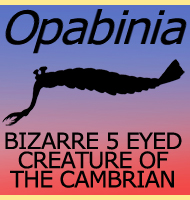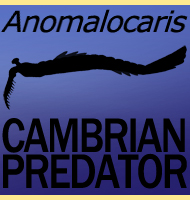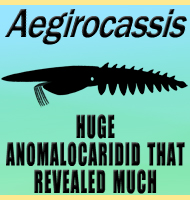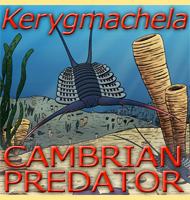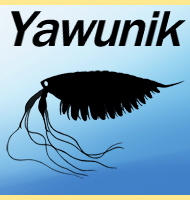


Sidneyia
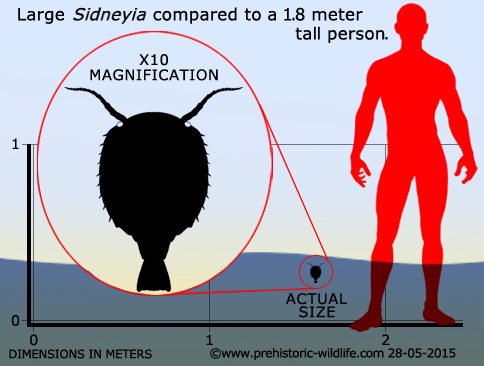
Name: Sidneyia
(named after Sidney Wallcott).
Phonetic: Sid-ney-ah.
Named By: Charles Walcott - 1911.
Classification: Arthropoda, Limulavida.
Species: S. inexpectans
(type).
Diet: Carnivore.
Size: Largest specimens up to 12.7 centimetres
long.
Known locations: Canada, British Columbia -
Burgess Shale., Possibly also the USA.
Time period: Cambrian.
Fossil representation: Well over 100 individuals.
Sidneyia is thought to have been a carnivore of other bottom dwelling marine organisms, scouring the ocean floor and sensing them out with its antennae. So far Sidneyia is known from well over a hundred specimens, with many more likely to yet be found. Individuals ran from about five centimetres to just under thirteen centimetres on length. Sidneyia was named by Charles Walcott in 1911, and he named it after his son Sidney who actually discovered the first specimens.
Further reading
- Taphonomy of the Greater Phyllopod Bed community, Burgess Shale.
- PALAIOS 21 (5) -Jean-Bernard Caron & Donald A.
Jackson - 2006.
- New occurrence of the Burgess Shale arthropod Sidneyia in the Early
Cambrian Chengjiang Lagerst�tte (South China), and revision of the
arthropod Urokodia. - Alcheringa: An Australasian Journal of
Palaeontology. 26: 1–8. - Xingliang Zhang, Jian Han & Degan Shu
- 2008.
- Reconstructing the diet of a 505-million-year-old arthropod: Sidneyia
inexpectans from the Burgess Shale fauna. - Arthropod
Structure
& Development. 45 (2): 200–220. - Axelle Zaca�, Jean Vannier
& Rudy Lerosey-Aubril - 2016.
- The gnathobasic spine microstructure of recent and Silurian
chelicerates and the Cambrian artiopodan Sidneyia : Functional and
evolutionary implications. - Arthropod Structure & Development.
47 (1): 12–24. - Russell D. C. Bicknell, John R. Paterson, Jean-Bernard
Caron & Christian B Skovsted - 2017.
----------------------------------------------------------------------------
Random favourites
 |
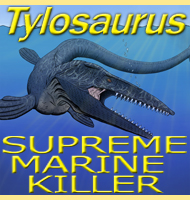 |
 |
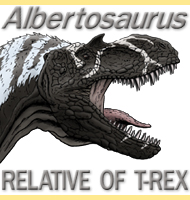 |
